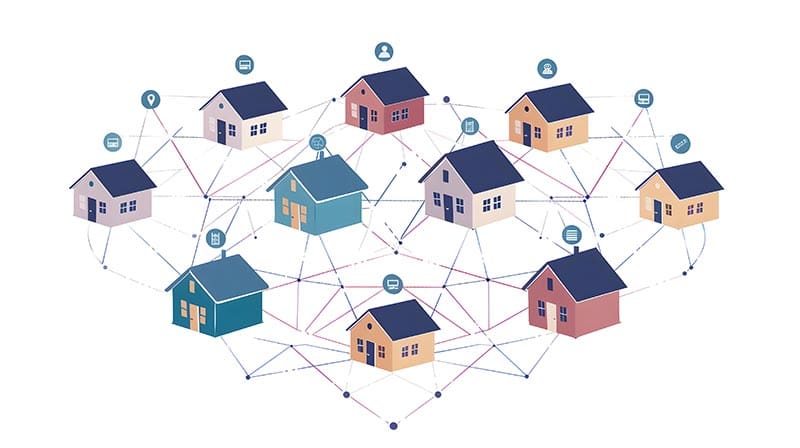Dead zones, fluctuating speeds, and inconsistent performance are just some of the many internet issues a Wi-Fi mesh network can resolve. These clever devices effectively extend the reach of your home’s Wi-Fi, giving devices additional “nodes” to connect to that are closer to them (and therefore more accessible) than the main router.

But is a Wi-Fi mesh network right for you? Let’s look at the upsides and downsides to find out.
Contents
Pros of a Wi-Fi Mesh Network
First, the benefits:
Coverage
The most blatant benefit and the leading reason many people invest in a Wi-Fi mesh network is that it extends the coverage of your home’s Wi-Fi network far beyond the means of a simple router.
Your router may be downstairs in the living room, for example, and your internet works fine there. However, up in some of the bedrooms, the signal drops, speeds suffer, or you can’t even connect at all. A mesh network will fix that.
Consistency
Mesh networks don’t just let you connect more devices in more areas around the home but they also provide a remarkable level of consistency in terms of speed and other performance metrics.
In other words, if we reuse the example above, you can get the same internet experience in your bedrooms upstairs as you would in the living room sitting right next to your router. You won’t have to deal with frustrating dead zones or areas where the signal seems patchy or unreliable.
Scalable
Another aspect of mesh networks is that they don’t really have any fixed upper limit in terms of how far you can take them. You can keep on adding nodes in the future, if needed, to support more devices and take your home Wi-Fi signal even further.
You could even take the signal outside to a shed or patio space, or extend it up or down into attics and basements. Or, let’s say you extend your home – you’ll be able to place new nodes around the extension and stay online wherever you go.

Cons of a Wi-Fi Mesh Network
Now, the downsides:
Cost
Arguably the biggest downside is the cost. While budget-friendly mesh nodes exist, a quality system can cost several hundred dollars. That might even rise into a four-figure price if you have a very large property and need more nodes.
Plus, as network technology evolves and systems change, you might have to replace your old mesh nodes with the latest models a few years later. This means you may not necessarily get much value from this tech.
“Overkill”
While many people are tempted by the prospect of a mesh network, they may be a bit “overkill” in some homes. Many routers these days are strong enough to emit a powerful signal that should lead to decent speeds and performance in almost any small home, apartment or even mid-sized home.
In larger properties, mesh networks are more useful, but even then, a signal booster or range extender might suffice (and will cost a lot less). Therefore, you may regret your purchase if you buy a fancy mesh network and find that it doesn’t change your life all that much.
Complicated
While mesh networks are designed to be user-friendly, they’re not always the most intuitive accessories. The setup process, in particular, can be quite time-consuming, and those with little technical expertise may struggle with node placement and configuration.
Adding new nodes to an existing setup is sometimes tricky, too. And if any individual node has a problem, your performance can suffer until you find it and fix it. In short, you need a reasonable level of network knowledge to make the most of these devices.

Should You Get One?
If you live in a big home, work from home, and/or struggle with dead zones and speed issues, then a Wi-Fi mesh network may be worth it. If you live in a smaller home with fewer issues and have a smaller budget, consider looking into a signal booster instead.




